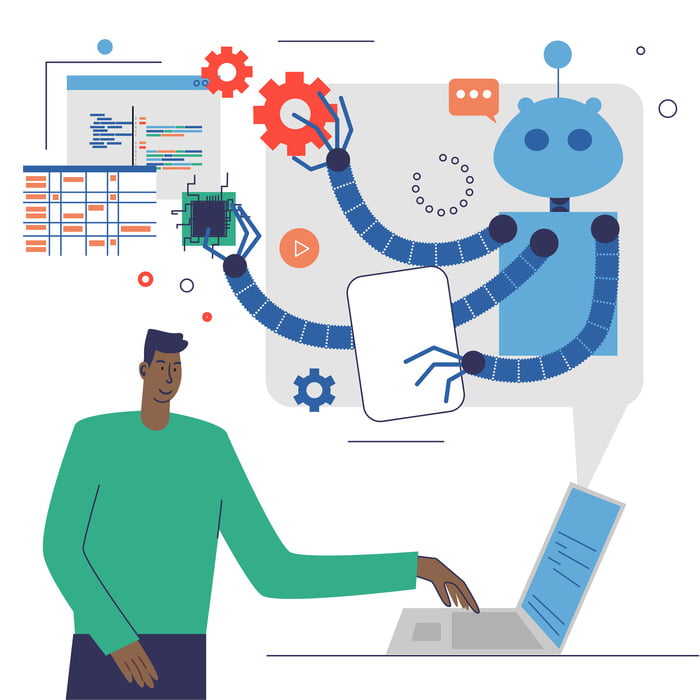In 2023, IT Service Management (ITSM) finds itself at a crossroads, impacted by economic fluctuations and technological advancements. The traditional approach of investing heavily in cumbersome, inadequate software is becoming obsolete. A new paradigm is emerging, one that demands agility, scalability, and a keen understanding of economic realities.
“46% of organizations thought their ITSM tools to be great while 24% wanted to replace theirs” – AXELOS survey
Related blog: Transforming Branch IT Infrastructure Management: Leveraging ITSM for Enhanced Localized Support

The state of ITSM Tools in 2023: The good, the bad, and the reality
Economic realities reshaping ITSM budgets
The economic landscape of 2023, irrespective of its growth or stagnation, is ushering in an era where extravagant spending on subpar software is untenable. Organizations are becoming increasingly vigilant about their IT investments, focusing on cost optimization without compromising on quality. This trend is pushing ITSM providers to innovate, offering more with less and ensuring that each dollar spent translates into tangible value.
Hence, there is more focus on investing in solutions that promise long-term benefits and scalability. This approach also includes a keen focus on the total cost of ownership (TCO) of ITSM tools, assessing upfront costs and their long-term financial impact.
Emphasis on efficiency during economic recession
With the looming recession, the need for efficiency has intensified. Organizations are scrutinizing every aspect of their IT spending, seeking to eliminate waste and maximize value from their ITSM investments. This scrutiny goes beyond mere cost-cutting; it’s about optimizing resource allocation to ensure that critical services and innovations are left unhampered.
Many are increasingly adopting lean ITSM practices, focusing on agility and responsiveness to changing market conditions. Moreover, there is a growing recognition that ITSM is a competitive advantage, enabling organizations to pivot quickly in a challenging economic environment.
Shift to user-friendly technology

There’s a growing trend towards adopting technologies that resonate with a younger, more tech-savvy workforce. Modern ITSM tools are expected to be intuitive, engaging, and aligned with the digital habits of newer generations. As such, providers are prioritizing user experience (UX) in their designs, ensuring that their tools are powerful, accessible, and effortless to use.
The shift also acknowledges the role of ITSM tools in employee satisfaction and retention, particularly in an era where digital proficiency and workplace technology are key factors in job choice.
“Employee experience has increased dramatically in importance in ITSM in just a year, from 55% to 73%.” – The SysAid 2023 State of Service Management Report
Automation as a top priority
Automation in ITSM is evolving from a luxury to a necessity. It’s reshaping how IT teams prioritize tasks, with a focus on automating routine processes to free up time for more strategic initiatives. This transition recognizes the growing complexity and volume of IT tasks in modern organizations, where manual management is no longer feasible. By automating repetitive tasks, they can reduce human error, improve response times, and enhance overall service quality.
Furthermore, automation is seen as a key enabler for scaling IT services in line with business growth, allowing IT departments to manage expanding workloads without a proportional increase in headcount. This approach also aligns with the growing trend of IT being a strategic business partner rather than just a support function.
Expectations for ITSM in 2024: Paving the way
Fully automated ITSM workflows
The upcoming year will likely see the maturation of fully automated ITSM workflows. These systems will handle the majority of routine tasks, drastically reducing manual effort and speeding up service delivery. For instance, automated workflows can seamlessly manage ticket routing and resolution, ensuring that issues are addressed by the most qualified personnel without delay.
Additionally, these workflows can adapt to evolving business needs, integrating new processes and technologies as they emerge.
Integration of Gen AI and tools like ChatGPT
AI, particularly generative models like ChatGPT, will play a central role in ITSM. Their use in automating customer support, predictive analytics, and decision-making processes will become more prevalent. For example, ChatGPT can offer real-time, intelligent responses to common IT inquiries, reducing the load on human support teams.
These AI tools can also analyze vast amounts of data to identify trends and predict potential issues before they escalate.
Value-driven, modular ITSM usage
2024 is expected to emphasize value-driven, modular ITSM solutions. Organizations will prefer customizable, on-demand services over one-size-fits-all solutions, allowing them to scale and adapt as per their specific needs.
An example of this could be the ability to integrate third-party applications seamlessly into the ITSM environment, allowing businesses to tailor their ITSM framework to their unique operational requirements.
Increased IT service availability
With the advancement in intelligent triggers and custom event-based rules, IT service availability is set to increase. This approach will enable proactive identification and resolution of issues, minimizing downtime and improving user satisfaction.
For instance, IT systems could automatically detect network anomalies and initiate corrective measures without human intervention, ensuring continuous service availability.
AI-driven service cataloging
The automation of service cataloging, driven by AI, is anticipated to streamline request creation and fulfillment. This will expedite service delivery and enhance the overall user experience. In practice, this could mean that AI systems auto-populate service requests based on user behavior and past interactions.
In the end, this simplifies the request process and reduces the likelihood of errors or omissions.
Related blog: How Generative AI is Reshaping the ITOps Landscape?
Final thoughts
As we look towards the horizon of 2024, it’s evident that the landscape of ITSM is poised for a transformative leap. The integration of advanced technologies and the metamorphosis towards more agile, user-centric models signify a new chapter in IT service management.
This evolution is more than a response to emerging challenges; it’s a proactive stride towards building and managing IT environments that are more resilient, aligning with the broader business objectives.























